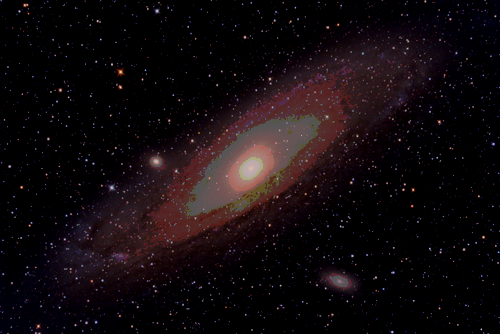
Kevin Chernoff
Good morning. It is October 25th, and today’s image features one of the most photogenic galaxies from Earth’s vantage point—the Andromeda Galaxy.
This photo was captured by an astrophotographer named Kevin Chernoff using a 6-inch reflector telescope on a tracking mount. According to Chernoff, this was an astrophotography-modified, mirrorless camera without any special filters. “It is about two and a half hours of total exposure time across 300 individual frames, stacked and processed together,” he said. “It was shot from a dark roadside location about an hour away from my home.”
Home for Chernoff is British Columbia, Canada.
There are a few dozen galaxies closer to the Milky Way than the Andromeda Galaxy, but it’s the nearest large spiral galaxy that looks a lot like our own. From an amateur astronomy perspective, what I like most about the Andromeda Galaxy is that it is the farthest object that humans can see with the naked eye. And at 2.5 million light-years away, that is really far away. If you want to try to find it on your own, EarthSky has a nice guide for tracking it down. Or rather, up.
Have a great day, and we’ll be back tomorrow with some more space-y goodness.
Source: Kevin Chernoff.
Do you want to submit a photo for the Daily Telescope? Reach out and say hello.

